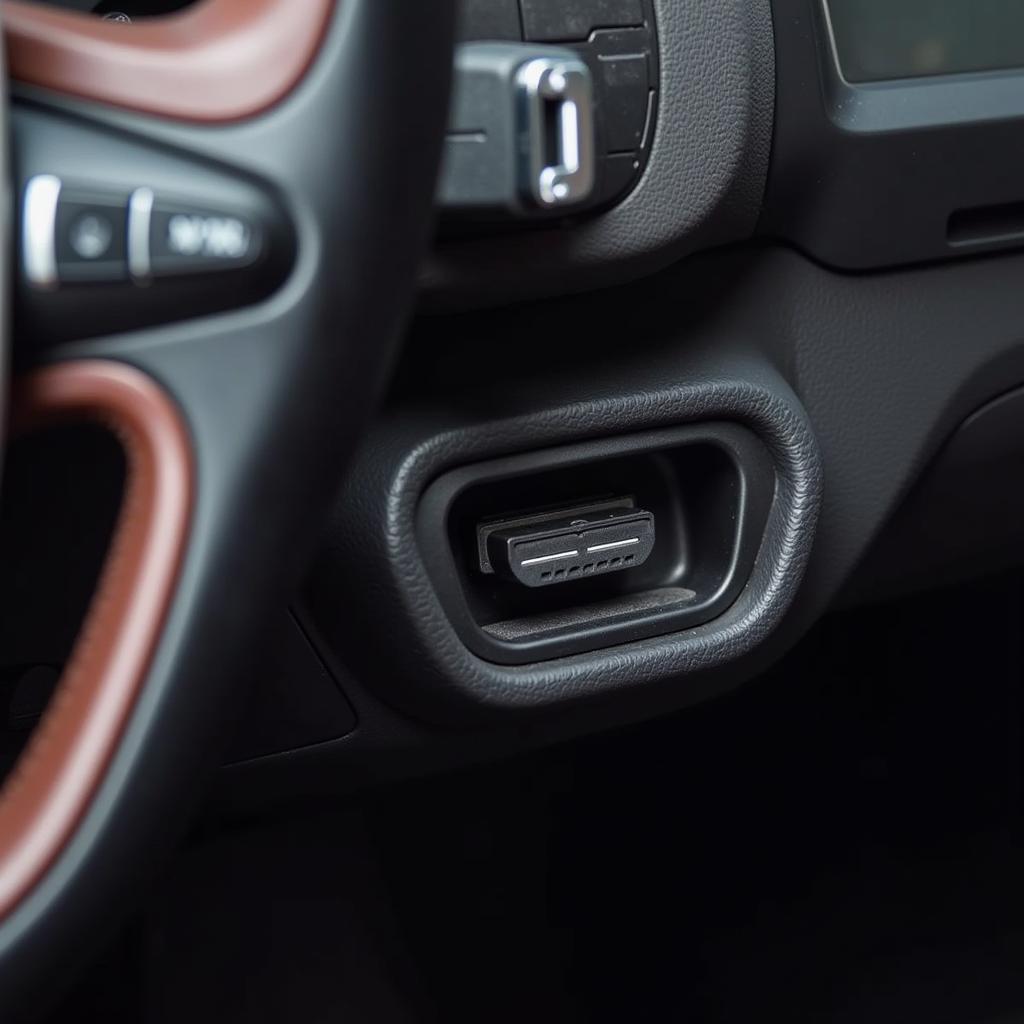Early warning brake sensors are an integral part of modern vehicles, playing a crucial role in preventing accidents and ensuring driver safety. These sensors work diligently behind the scenes, alerting drivers to potential problems with the braking system. While you might not notice them directly, they’re constantly monitoring and reporting information to ensure your brakes are functioning optimally.
How Early Warning Brake Sensors Work
Early warning brake sensors utilize various technologies to detect and signal potential brake issues. Here’s a breakdown of how they operate:
- Wear Sensors: These sensors are embedded within the brake pads or shoes and detect when the brake material reaches a critical wear point. They often consist of a metal contact point that makes contact with a metal plate when the brake pads wear down, triggering a warning light on the dashboard.
- Pressure Sensors: These sensors measure the hydraulic pressure within the braking system, identifying any potential leaks or blockages. If the pressure drops below a certain threshold, they activate the warning light, indicating a potential problem.
- Electronic Stability Control (ESC) Sensors: These sensors are essential for maintaining vehicle stability during braking and cornering. They monitor wheel speed and steering input, ensuring the brakes are applied to the correct wheels at the right time to maintain control.
- ABS Sensors: These sensors measure the speed of each wheel individually. They are essential for the anti-lock braking system (ABS) to function effectively, preventing the wheels from locking during hard braking.
Why Early Warning Brake Sensors are Important
Understanding the significance of early warning brake sensors is crucial for ensuring driver safety. These sensors provide valuable insights into the health of your braking system, allowing you to address potential problems before they escalate into more serious issues. Here’s why they’re so critical:
- Prevent Accidents: Early warning brake sensors help prevent accidents by alerting drivers to potential braking issues before they become dangerous.
- Proactive Maintenance: These sensors allow you to schedule proactive maintenance, replacing brake pads or shoes before they completely wear out, preventing costly repairs and ensuring optimal braking performance.
- Peace of Mind: Knowing your braking system is monitored and being alerted to any potential problems provides peace of mind and increases confidence on the road.
Identifying Early Warning Brake Sensor Issues
Understanding the warning signs of a malfunctioning early warning brake sensor is crucial for maintaining a safe and reliable vehicle. Here’s a guide to identifying potential issues:
- Brake Warning Light: The most obvious indicator of a problem is the illumination of the brake warning light on your dashboard. This light might be accompanied by a specific message on your vehicle’s display, indicating the nature of the problem.
- Unusual Braking Sounds: If you hear unusual grinding, squealing, or clicking noises when braking, it could indicate worn brake pads or a problem with the braking system.
- Spongy or Soft Brake Pedal: A spongy or soft brake pedal can be a sign of air in the hydraulic lines or a leak in the braking system.
- Vehicle Pulling to One Side: If your vehicle pulls to one side when braking, it could indicate a problem with the brake caliper or other braking components on one side.
What to Do If You Suspect a Problem
If you suspect a problem with your early warning brake sensors or the braking system, it’s crucial to take immediate action:
- Pull Over Safely: If you experience a problem while driving, safely pull over to the side of the road.
- Inspect the Brake Warning Light: Check for any messages on your vehicle’s display to gain a better understanding of the issue.
- Contact a Mechanic: It’s essential to schedule an appointment with a qualified mechanic as soon as possible to have the problem diagnosed and repaired.
- Avoid Driving: Do not attempt to drive the vehicle if you suspect a major brake issue. Driving with a faulty braking system is extremely dangerous.
“Early warning brake sensors are a lifeline for drivers, providing valuable information about the health of the braking system and preventing potential accidents,” says renowned automotive technician, John Smith.
FAQs about Early Warning Brake Sensors
Q: How often should I have my brake sensors inspected?
A: It’s generally recommended to have your brake sensors inspected every 6 months or 5,000 miles, depending on your vehicle’s specific requirements.
Q: How do I know if my brake sensors need to be replaced?
A: If your brake warning light illuminates or if you hear unusual noises when braking, it’s a good idea to have your brake sensors inspected and replaced if necessary.
Q: Can I replace brake sensors myself?
A: Replacing brake sensors can be a challenging task, especially for those without experience. It’s recommended to have a qualified mechanic handle the replacement.
Q: How much does it cost to replace brake sensors?
A: The cost of replacing brake sensors varies depending on the vehicle model and the type of sensors required.
Q: Are early warning brake sensors universal?
A: Brake sensors are specific to each vehicle model and year. It’s essential to use the correct sensor for your vehicle to ensure proper function.
Conclusion
Early warning brake sensors are crucial for ensuring safe and reliable driving. By understanding their function and identifying potential issues, you can maintain a safe and functional braking system, providing peace of mind and enhancing your overall driving experience. Remember, if you experience any problems with your braking system, contact a qualified mechanic immediately to ensure your safety and the safety of others on the road.

